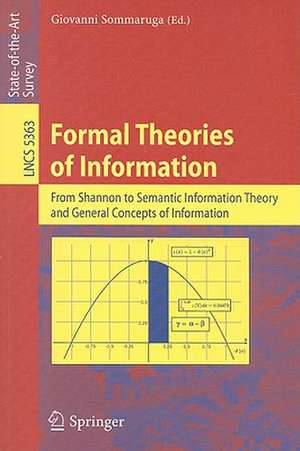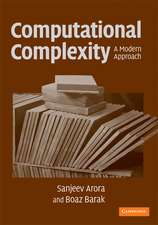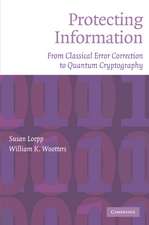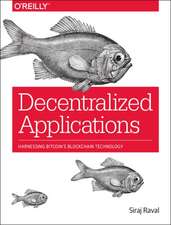Formal Theories of Information: From Shannon to Semantic Information Theory and General Concepts of Information: Lecture Notes in Computer Science, cartea 5363
Editat de Giovanni Sommarugaen Limba Engleză Paperback – 22 apr 2009
Din seria Lecture Notes in Computer Science
- 20%
 Preț: 1061.55 lei
Preț: 1061.55 lei - 20%
 Preț: 307.71 lei
Preț: 307.71 lei - 20%
 Preț: 438.69 lei
Preț: 438.69 lei - 20%
 Preț: 579.30 lei
Preț: 579.30 lei -
 Preț: 410.88 lei
Preț: 410.88 lei - 17%
 Preț: 427.22 lei
Preț: 427.22 lei - 20%
 Preț: 596.46 lei
Preț: 596.46 lei - 15%
 Preț: 448.04 lei
Preț: 448.04 lei - 20%
 Preț: 353.50 lei
Preț: 353.50 lei -
 Preț: 389.49 lei
Preț: 389.49 lei - 20%
 Preț: 309.90 lei
Preț: 309.90 lei - 20%
 Preț: 645.28 lei
Preț: 645.28 lei - 20%
 Preț: 763.23 lei
Preț: 763.23 lei - 15%
 Preț: 580.46 lei
Preț: 580.46 lei - 20%
 Preț: 310.28 lei
Preț: 310.28 lei - 20%
 Preț: 655.02 lei
Preț: 655.02 lei - 20%
 Preț: 1183.14 lei
Preț: 1183.14 lei - 20%
 Preț: 340.32 lei
Preț: 340.32 lei -
 Preț: 449.57 lei
Preț: 449.57 lei - 20%
 Preț: 591.51 lei
Preț: 591.51 lei - 18%
 Preț: 938.83 lei
Preț: 938.83 lei - 20%
 Preț: 337.00 lei
Preț: 337.00 lei - 20%
 Preț: 649.50 lei
Preț: 649.50 lei - 20%
 Preț: 607.40 lei
Preț: 607.40 lei - 20%
 Preț: 1414.79 lei
Preț: 1414.79 lei - 20%
 Preț: 1024.44 lei
Preț: 1024.44 lei - 20%
 Preț: 583.40 lei
Preț: 583.40 lei - 20%
 Preț: 453.32 lei
Preț: 453.32 lei - 20%
 Preț: 575.49 lei
Preț: 575.49 lei - 20%
 Preț: 1075.26 lei
Preț: 1075.26 lei - 20%
 Preț: 585.88 lei
Preț: 585.88 lei - 20%
 Preț: 825.93 lei
Preț: 825.93 lei - 17%
 Preț: 360.20 lei
Preț: 360.20 lei - 20%
 Preț: 763.23 lei
Preț: 763.23 lei - 20%
 Preț: 340.32 lei
Preț: 340.32 lei - 20%
 Preț: 504.58 lei
Preț: 504.58 lei - 20%
 Preț: 369.13 lei
Preț: 369.13 lei - 20%
 Preț: 580.93 lei
Preț: 580.93 lei - 20%
 Preț: 343.62 lei
Preț: 343.62 lei - 20%
 Preț: 350.21 lei
Preț: 350.21 lei - 20%
 Preț: 583.40 lei
Preț: 583.40 lei - 20%
 Preț: 583.40 lei
Preț: 583.40 lei - 15%
 Preț: 438.59 lei
Preț: 438.59 lei - 20%
 Preț: 341.95 lei
Preț: 341.95 lei - 20%
 Preț: 238.01 lei
Preț: 238.01 lei - 20%
 Preț: 538.30 lei
Preț: 538.30 lei
Preț: 388.13 lei
Nou
Puncte Express: 582
Preț estimativ în valută:
74.28€ • 80.65$ • 62.39£
74.28€ • 80.65$ • 62.39£
Carte tipărită la comandă
Livrare economică 22 aprilie-06 mai
Preluare comenzi: 021 569.72.76
Specificații
ISBN-13: 9783642006586
ISBN-10: 3642006582
Pagini: 277
Ilustrații: VII, 269 p.
Dimensiuni: 155 x 235 x 20 mm
Greutate: 0.42 kg
Ediția:2009
Editura: Springer Berlin, Heidelberg
Colecția Springer
Seriile Lecture Notes in Computer Science, Theoretical Computer Science and General Issues
Locul publicării:Berlin, Heidelberg, Germany
ISBN-10: 3642006582
Pagini: 277
Ilustrații: VII, 269 p.
Dimensiuni: 155 x 235 x 20 mm
Greutate: 0.42 kg
Ediția:2009
Editura: Springer Berlin, Heidelberg
Colecția Springer
Seriile Lecture Notes in Computer Science, Theoretical Computer Science and General Issues
Locul publicării:Berlin, Heidelberg, Germany
Public țintă
ResearchCuprins
Philosophical Reflections.- Philosophical Conceptions of Information.- The Syntactical Approach.- Information Theory, Relative Entropy and Statistics.- Information: The Algorithmic Paradigm.- The Semantical Approach.- Information Algebra.- Uncertain Information.- Comparing Questions and Answers: A Bit of Logic, a Bit of Language, and Some Bits of Information.- Channels: From Logic to Probability.- Beyond the Semantical Approach.- Modeling Real Reasoning.- Philosophical Conclusions.- One or Many Concepts of Information?.
Recenzii
From the reviews:
“This new anthology on formal theories of information is based upon research presented at the May 2006 Muenchenwiler seminar of the Information and Knowledge research groups of the computer science departments of the universities of Bern, Fribourg, and Neuchatel. … This is probably the clearest account of algorithmic information theory that one will come across. … Formal theories of information and their philosophical analysis are being developed right now, and this is what makes a volume of this quality so welcome.” (Sebastian Sequoiah-Grayson, Minds and Machines, Vol. 22, 2012)
“This new anthology on formal theories of information is based upon research presented at the May 2006 Muenchenwiler seminar of the Information and Knowledge research groups of the computer science departments of the universities of Bern, Fribourg, and Neuchatel. … This is probably the clearest account of algorithmic information theory that one will come across. … Formal theories of information and their philosophical analysis are being developed right now, and this is what makes a volume of this quality so welcome.” (Sebastian Sequoiah-Grayson, Minds and Machines, Vol. 22, 2012)
Textul de pe ultima copertă
This book presents the scientific outcome of a joint effort of the computer science departments of the universities of Berne, Fribourg and Neuchâtel.
Within an initiative devoted to "Information and Knowledge", these research groups collaborated over several years on issues of logic, probability, inference, and deduction. The goal of this volume is to examine whether there is any common ground between the different approaches to the concept of information.
The structure of this book could be represented by a circular model, with an innermost syntactical circle, comprising statistical and algorithmic approaches; a second, larger circle, the semantical one, in which "meaning" enters the stage; and finally an outermost circle, the pragmatic one, casting light on real-life logical reasoning.
These articles are complemented by two philosophical contributions exploring the wide conceptual field as well as taking stock of the articles on the various formal theories of information.
Within an initiative devoted to "Information and Knowledge", these research groups collaborated over several years on issues of logic, probability, inference, and deduction. The goal of this volume is to examine whether there is any common ground between the different approaches to the concept of information.
The structure of this book could be represented by a circular model, with an innermost syntactical circle, comprising statistical and algorithmic approaches; a second, larger circle, the semantical one, in which "meaning" enters the stage; and finally an outermost circle, the pragmatic one, casting light on real-life logical reasoning.
These articles are complemented by two philosophical contributions exploring the wide conceptual field as well as taking stock of the articles on the various formal theories of information.










